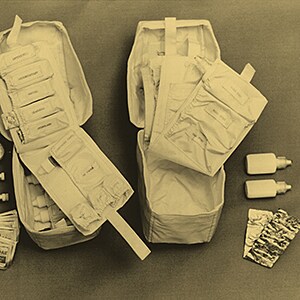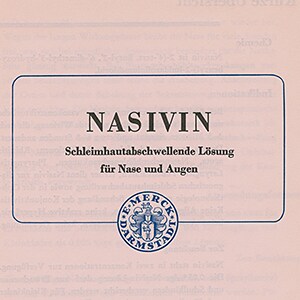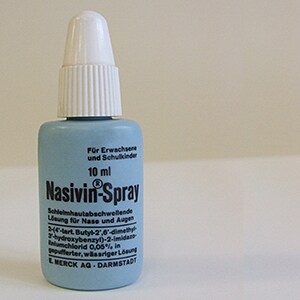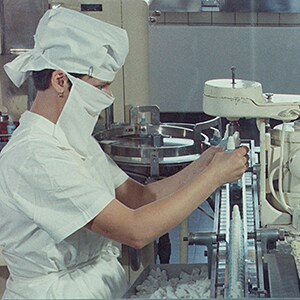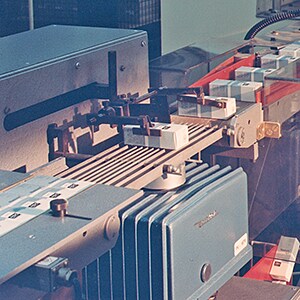
»America has NASA – we have Nasivin.«
Advertisement, 1982
On July 21, 1969 (Earth time), the Apollo 11 mission made history: Neil Armstrong and Edwin Aldrin are the first humans to set foot on the moon.
In the early days of manned space exploration, intensive research is devoted not only to the technical problems to be resolved but also to the effects of weightlessness on the human body. The first cosmonauts and astronauts embark on their journeys under close medical observation.
In order to prevent illness from endangering the success of the mission, a medical kit is included onboard the spacecraft. Medications are selected with special care. NASA, the United States National Aeronautics and Space Administration, determines which medicines should have priority, like analgesics and antibiotics. However, the list also includes a decongestant nasal spray to help keep the astronauts breathing freely under zero-gravity conditions – which cause the nasal mucous membranes to swell – or if they catch a cold. To minimize the weight and size of the medical kit, it is necessary to limit the number of medicinal products to 15.
Against advice, the nasal spray is left out of the kit at first – with near-fatal consequences. The crew of the preparatory Apollo 7 mission catch a viral infection and suffer from blocked noses to such an extent that they cannot close the helmets of their spacesuits during re-entry into the Earth’s atmosphere. NASA immediately adds the missing item to the kit, choosing the active ingredient oxymetazoline among the options available.
Oxymetazoline was developed in the company’s research laboratories, the aim being to find a substance that would offer competition to rival suppliers of vasoconstrictor drugs. Synthesis is difficult and costly, and a decision to call off the trials is all but final. However, one researcher sees the potential of this drug class: »The only one to remain interested in it was me!« says Wolfgang Fruhstorfer, who continues to work in the face of all resistance – and is proven right: »See!« The patent is hugely important to the company. Soon the medicine is helping people in 60 countries to breathe more easily. Incombination with a corticoid, Nasivin helps to treat severe allergic and inflammatory forms of rhinitis. And in addition to its long-lasting decongestant effects, Nasivin is soon revealed to have antiviral, antioxidant and anti-inflammatory properties – in 2009, Nasivin is voted »Medicine of the Year«. In 2018 the business transfered to Procter & Gamble.
NASA quickly took notice of oxymetazoline because of its reliable effectiveness and good tolerability, a fact that has perpetuated to this very day. The information on the duration of action found in monographs and literature actually originates from the findings from applications in space.
Oxymetazoline solution is packaged in cutting-edge, fully automated filling lines in sterile rooms. The pride is such that several photos are included in the book published in 1968 marking the company’s 300th anniversary.
»For runny noses and itchy eyes...«: Nasivin makes a name for itself with highly creative promotional materials including catchy advertising copy, billboards and mascots. A number of films are also made. The trade name is even often used as a synonym for locally applied decongestants.


